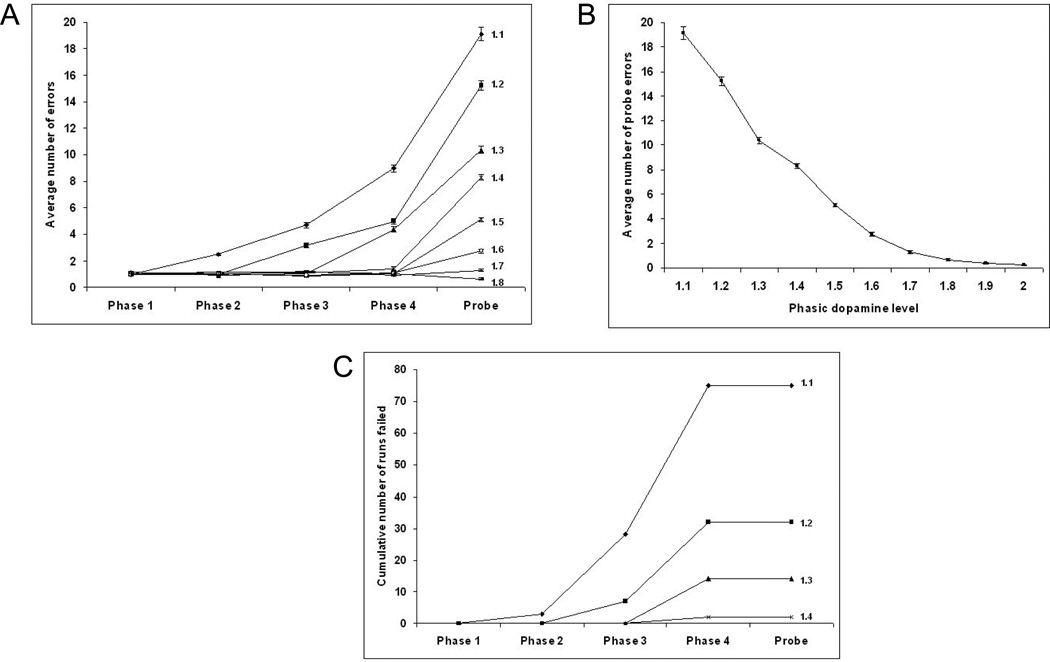Figure 8.
The effect of maximum phasic dopamine reward level on model task performance. (A). As the phasic dopamine level at time of reward is decreased from 2.0 to 1.4, there is no change in the number of acquisition phase errors. As the level is decreased below 1.4, errors in the acquisition phases start to increase, starting first in the later phases. (B). Probe error rate is inversely related to phasic dopamine level. (C). Decreasing the phasic dopamine level for reward below 1.4 leads to an increase in the failure rates in the late acquisition phases, but not in the probe phase. Phasic dopamine levels above 1.4 are not shown as no failures occurred.

